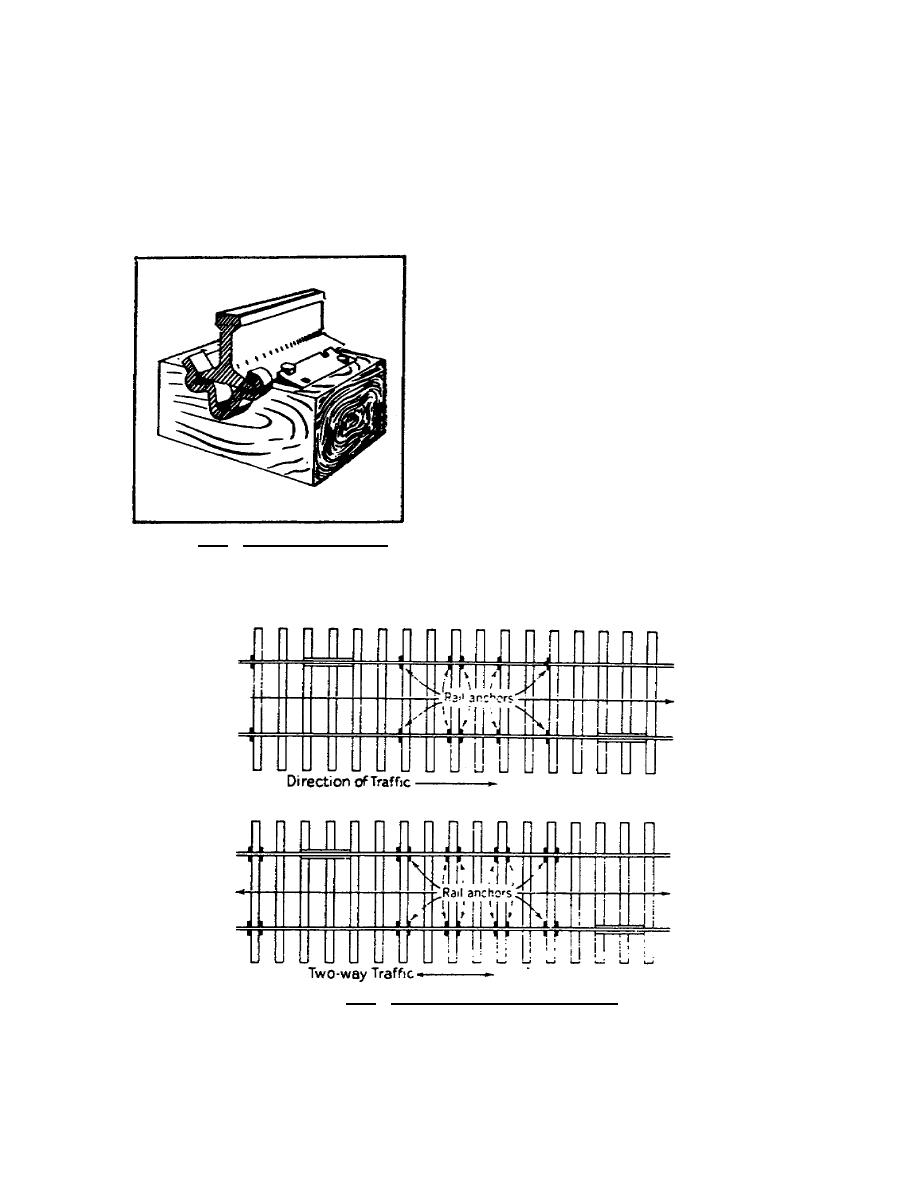
3.22.
RAIL ANCHORS, BRACES, AND GAGE RODS
Where there is a tendency for rail to move longitudinally in track under one-way traffic
or on heavy grades, rail anchors are used to restrain the movement. The anchor is firmly
attached to the base of the rail and bears against the side of the tie facing oncoming traffic.
Anchors are always put on both rails of the track and are located opposite each other to prevent
uneven movement of ties. Figure 3.14
illustrates a rail anchor, and figure 3.15
shows the proper installation locations.
Anchors must bear directly on ties at all
times for effectiveness. If the anchor loses
contact for any reason, it must be removed
and reset.
A rail brace, like the one in figure
3.16, is used on curves and switches to resist
excessive lateral thrust on the rail. Placed
outside the rail, the brace is spiked to the tie
and bears against the rail web and head.
Military standards require four braces on
each length of rail on 3- to 6-degree curves,
Figure 3.14. Typical Rail Anchor.
six on each length of rail on 6- to 10-degree
curves, and a brace on alternate ties for
curves sharper than 10 degrees.
Figure 3.15. Rail Anchors Correctly Located.
60



 Previous Page
Previous Page
